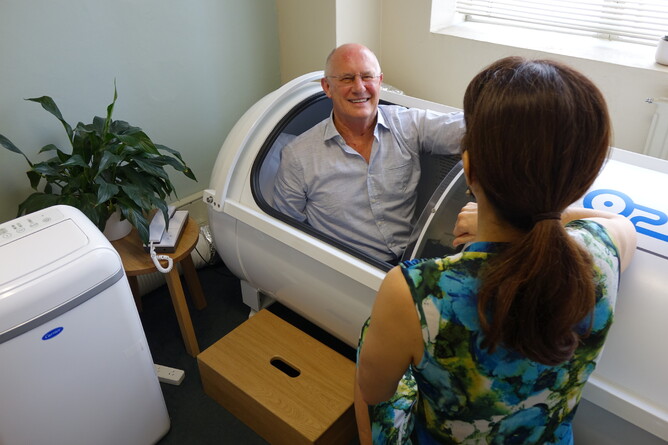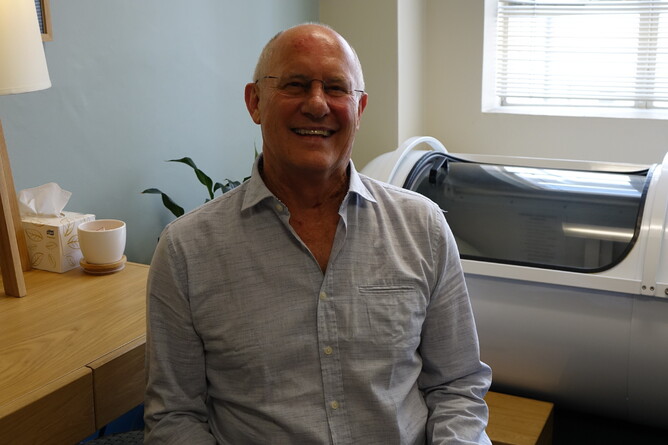Myeloma Progression Stalls in the Face of Dietary Changes and Increased Oxygen to the Body’s Cells.
John, now 68 years of age, was first suspected of having a blood abnormality in June 2015 after a pre-op blood test, for a hip replacement. John says “The only symptoms, which had been appearing for approximately 18 months were small subcutaneous haemorrhages, randomly appearing around my neck and eyes. I only noticed these when looking in the mirror or when my wife pointed them out. I thought it might be my blood pressure tablets and/or Statins, as the symptom occurred in the same time frame as commencing these medications”.
“Smouldering Multiple Myeloma was first mentioned at my December 2015 appointment at Wellington Blood Cancer Centre, after further blood tests and a bone marrow biopsy” says John. Myeloma, also known as Multiple Myeloma or Plasma Cell Myeloma is a cancer of plasma cells (mature B-lymphocytes) that usually arises in the bone marrow; it can cause tumours, which may occur in the bone marrow and/or on the surface of bones throughout the body. Under normal conditions, plasma cells produce antibodies that help protect the body from infection and disease. As myeloma cells multiply, they crowd the bone marrow and prevent it from making normal numbers of red cells, white cells and platelets. Myeloma cells can also interfere with the production of normal antibodies making the person more susceptible to disease and infection.
At his appointment, John’s specialist stated “His serum free light chain ratio is just greater than 100, which does categorise him at an increased risk of progression. At this stage he has a diagnosis of smouldering Myeloma, but I will arrange an MRI scan of his spine and pelvis to exclude lytic lesions which would be an indication of treatment”. John’s MRI was normal, but the specialist could not explain the lesions on his neck and face.
“After my diagnosis and being told to do nothing by my Cancer Specialist” says John. “I thought that I should look at what would be sensible to do. I had already cut back food volume and alcohol intake with some success”. John started taking supplements thought to be beneficial to cancer patients, he started weekly Pilates classes and took a 30-minute walk before breakfast 3-4 times a week.
While visiting his osteopath for a sore shoulder in April 2016 John found out about Hyperbaric Oxygen Therapy (HBOT). “I then read about the decades of research summarising the benefits of HBOT. This led me to think that it was worth trying” says John. HBOT treatment is received while lying in a mild HBOT chamber. It provides up to 1.5ATA in pressure, which is like being 5m under the sea. A powerful 10 litre oxygen concentrator is used to provide 93% oxygen through a mask/cannula for oxygen delivery in the chamber. Under normal circumstances, oxygen is transported throughout the body only by red blood cells and a very small amount in plasma.
With HBOT, oxygen is dissolved into all the body's fluids, the plasma, the central nervous system fluids, the lymph, and the bone. It can be carried to areas where circulation is diminished or blocked. In this way, extra oxygen can reach all the damaged tissues and the body can support its own healing process. The increased oxygen greatly enhances the ability of white blood cells to kill bacteria [4]. Recent studies have shown that HBOT can induce cell apoptosis (cell death) of B-Myeloma cancer cells [1]. HBOT has also been shown to reduce swelling and stimulate neovascularisation and angiogenesis [2]. John began mild Hyperbaric Oxygen Therapy (mHBOT) at City Hyperbaric in Central Wellington in May 2016, beginning with 40 x 60-minute sessions, which he completed in mid-August 2016 (with a 2-week holiday after 30 sessions). “I was a little concerned about lying enclosed in a cylinder” says John, “but found that any discomfort soon disappeared. I felt an immediate positive effect after starting mHBOT treatment. After about 10 sessions I had noticeably more energy, a spring in my step and less joint pain. The mHBOT technicians commented on how well I was walking and getting in and out of the chamber.
After about 20 sessions I noticed that, even though it was taking 1.5 hrs out of my working day, being self-employed, I was very productive and was invoicing at least as much as before starting treatment and I was also feeling less stressed. After a few weeks without treatment (despite still feeling well) I decided that it would be beneficial to continue treatment 2 times per week to maintain the positive effects. My current energy levels, joint pain, skin condition and general feeling of wellbeing are all very good despite working solidly in a very active construction industry”.
John continued with follow up visits to the specialist every three months with six monthly formal reviews. His doctors said that his Multiple Myeloma is still slumbering and stable, they told him it may never change but, if it does there is no current cure and it is very painful and fatal.
John’s blood test results appear to have remained stable or even improved since starting mHBOT treatment in May 2016.
In May 2017 Wellington Hospital Consultant haematologist stated that “John is well, he is asymptomatic. His blood tests are stable and in fact his paraprotein is slightly less. He has no evidence of progression”.
Recently, John said, “my ‘bloods’ have improved slightly, and I received a favourable report on Monday this week from my specialist that as time goes by, the chances of my Myeloma changing from ‘slumbering’ to full blown is increasingly less likely.
So, I think it is fair to say that there has been some improvement, which the cancer specialist said was not usual”.
John states “I believe if I continue to receive mHBOT treatment and look after my general health with diet and exercise, I have a great chance of maintaining my current healthy state with plenty of energy for my business and private life".
John says "I recommend mHBOT treatment to everyone but especially to people who have been diagnosed with untreatable cancer, aching joints, low energy levels, stress, panic attacks and who have had major joint replacement surgery. Anyone over 60 years old would benefit. I find the treatment to be a very tranquil and peaceful experience during which I can meditate or read. Hyperbaric oxygen treatment has certainly given me a greater feeling of wellbeing and inner calm”.
City Hyperbaric would like you to please note, patient results may differ. We can guarantee we will give you our full attention and provide individual professional advice and a quality service, but cannot guarantee that you will have the same outcome as this case study.
All patients wanting to have mild Hyperbaric Oxygen Therapy must have an initial HBOT medical with one of our trained practitioners to determine the best course of treatment for them. References:
[1] Chena S.Y, Chena P.S, Hob C. H, Lin Y. Y, Chengb J.K, Wang H.K, Sytwu H.K. Apoptosis of T-leukemia and B-myeloma cancer cells induced by hyperbaric oxygen increased phosphorylation of p38 MAPK. Leukemia Research 31 (2007) 805–815.
[2] Stepien K, Ostrowski K.P, Matyja E. Hyperbaric oxygen as an adjunctive therapy in treatment of malignancies, including brain tumours. Med Oncol (2016) 33:101.
[3] Moen I, Stuhr L.E.B. Hyperbaric oxygen therapy and cancer—a review. Targ Oncol (2012) 7:233–242
[4] Sahni T, Hukku S, Jain M, Prasad A, Prasad R, Singh K. Recent Advances in Hyperbaric OxygenTherapy. The Association of Physicians of India. Medicine Update, Volume 14, 2004.
To find out more about the author Melanie, click here




